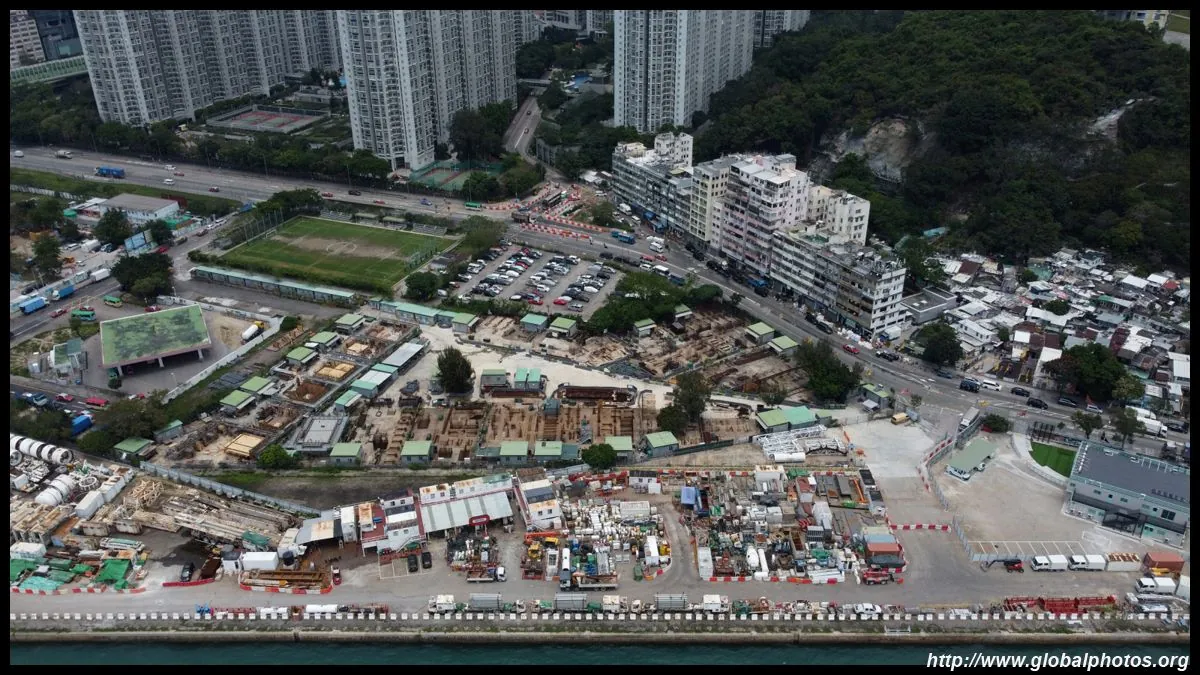In the bustling metropolis of Hong Kong, a city renowned for its towering skyscrapers and modern architecture, a small village stands as a testament to a bygone era. Cha Kwo Ling, one of the last remaining squatter settlements in the former British colony, is facing imminent demolition, signaling the end of a unique chapter in Hong Kong's history.
Lo Yuet-ping, a 72-year-old resident who has called Cha Kwo Ling home for over seven decades, is among the approximately 860 households preparing to relocate. The village, with its modest dwellings constructed from metal sheets and stones, alongside old granite structures, presents a stark contrast to the contemporary high-rises that dominate Hong Kong's skyline.
"I'm unwilling to part with anything."
The demolition of Cha Kwo Ling, scheduled to conclude its final phase in 2025, is part of a government initiative to create space for public housing. This redevelopment marks the culmination of Hong Kong's transformation from a fishing village to an industrial powerhouse, and finally to its current status as a global financial hub.
Originally established as a settlement for the Hakka people, a distinct Han Chinese subgroup, Cha Kwo Ling experienced significant population growth as mainland Chinese immigrants sought refuge and economic opportunities in Hong Kong. This influx was particularly notable between the late 1940s and 1950s, coinciding with China's civil war. During this period, Hong Kong's population surged from 600,000 in 1945 to 2 million by 1950, leading to the rapid expansion of squatter settlements across the city.
Charles Fung, a researcher and co-author of a book on Hong Kong's squatter housing, explains the historical context of these settlements. Residents often engaged in a "catch-me-if-you-can game" with authorities, constructing homes at night in hard-to-reach hillside locations to avoid demolition and secure potential resettlement rights.
Despite their precarious nature, these villages played a crucial role in supporting Hong Kong's economy, particularly during its manufacturing heyday. They housed small factories and were strategically located near industrial zones, informally bolstering the city's factory system.
The transition from squatter settlements to public housing was driven by various factors, including fire safety concerns and political considerations. The British colonial government's public housing initiative, which began in 1954 with the Shek Kip Mei Estate, has significantly shaped Hong Kong's urban landscape and social fabric.
For long-time residents like Lo Yuet-ping, the impending move represents more than just a change of address. It signifies the loss of a community steeped in rich traditions, such as the Qilin dance team and volunteer fire prevention efforts. Similarly, Teoh Bee Hua, a Malaysian who moved to Cha Kwo Ling in 1973 after marrying a villager, reminisces about the close-knit community and the "happy days" of neighborhood gatherings.
As Hong Kong continues to evolve, the demolition of Cha Kwo Ling serves as a poignant reminder of the city's rapid development and the cultural heritage that is being lost in the process. While progress marches on, the memories and stories of these vanishing communities will remain an integral part of Hong Kong's rich tapestry.
